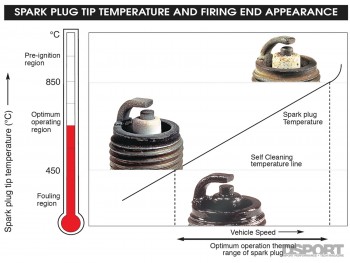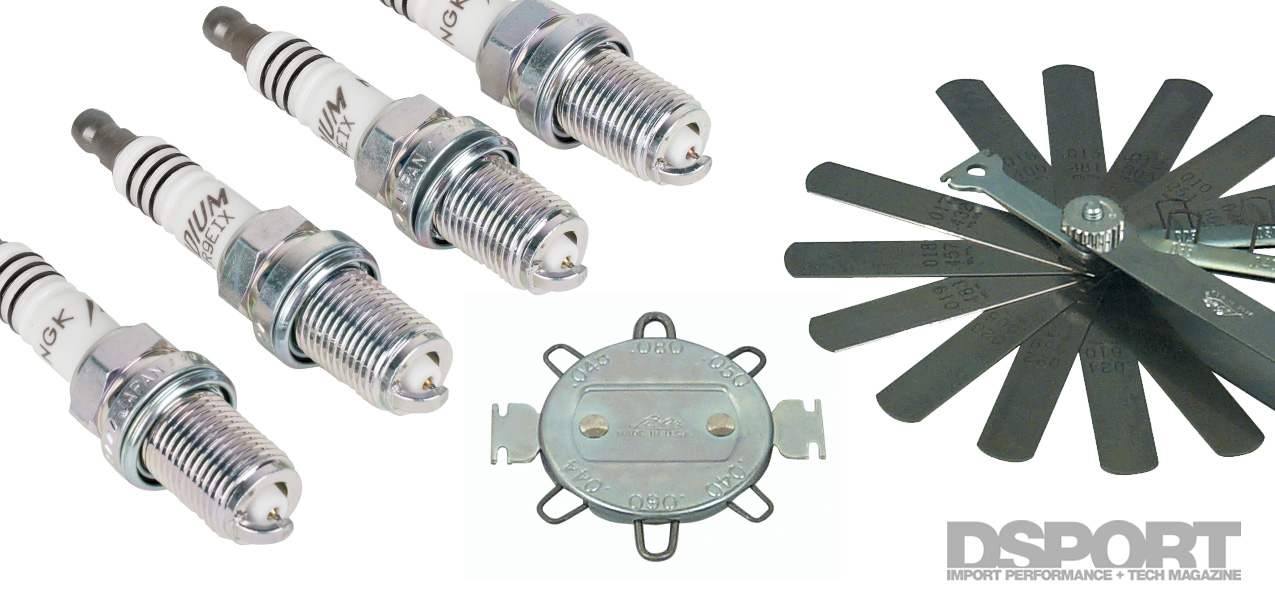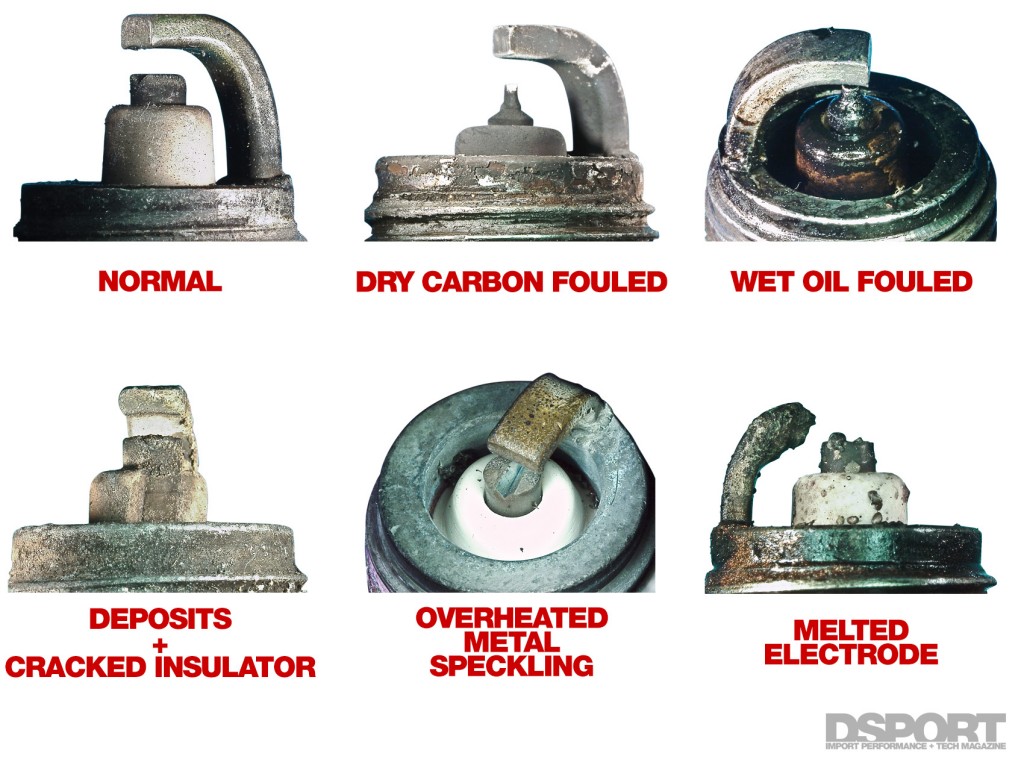SPARK PLUG LIFE
 The elements on the spark plug that wear over time are the center and side electrodes. The size and material of the electrodes determine the service life of the spark plug. Conventional plugs use a nickel-alloy center electrode typically measuring about 2.5mm in diameter. Most manufacturers recommend changing conventional plugs every 25,000 to 35,000 miles, but performance and economy gains are best when these conventional plugs are changed every 10,000 to 15,000 miles. Platinum plugs use a platinum alloy center electrode (which can also contain a small amount of Iridium). The center electrode on most Platinum plugs is about 1.1mm in diameter. Most manufacturers recommend 60,000 to 100,000 miles as an interval for changing the plugs, but once again changing at 40,000 to 50,000 miles should deliver a slight improvement in power and economy. During the last ten years, Iridium plugs have hit the performance scene. Some of these plugs have ultra-fine center electrodes that measure just 0.4mm in diameter. Although a 0.4mm iridium center electrode is only 13% of the size (in area) of a platinum electrode (less than 3% of the area of a conventional nickel electrode), Iridium’s superior corrosion and wear resistance give an identical service life to a 1.1mm platinum plug.
The elements on the spark plug that wear over time are the center and side electrodes. The size and material of the electrodes determine the service life of the spark plug. Conventional plugs use a nickel-alloy center electrode typically measuring about 2.5mm in diameter. Most manufacturers recommend changing conventional plugs every 25,000 to 35,000 miles, but performance and economy gains are best when these conventional plugs are changed every 10,000 to 15,000 miles. Platinum plugs use a platinum alloy center electrode (which can also contain a small amount of Iridium). The center electrode on most Platinum plugs is about 1.1mm in diameter. Most manufacturers recommend 60,000 to 100,000 miles as an interval for changing the plugs, but once again changing at 40,000 to 50,000 miles should deliver a slight improvement in power and economy. During the last ten years, Iridium plugs have hit the performance scene. Some of these plugs have ultra-fine center electrodes that measure just 0.4mm in diameter. Although a 0.4mm iridium center electrode is only 13% of the size (in area) of a platinum electrode (less than 3% of the area of a conventional nickel electrode), Iridium’s superior corrosion and wear resistance give an identical service life to a 1.1mm platinum plug.
GET IGNITED
[pullquote]ARE A SET OF IRIDIUM PLUGS RIGHT FOR YOU? THE ANSWER DEPENDS ON YOUR PARTICULAR PERFORMANCE COMBINATION[/pullquote]All automotive engines that run on gasoline rely on a spark for ignition. Without a good spark, it doesn’t matter how much air and fuel was stuffed into the cylinder—no spark means misfire, and misfire means a loss of power.
Today’s spark plugs are much different than the one’s found in the cars that your parents drove when they were your age. Advances in material science have provided better materials for the construction of spark plugs. Platinum and Iridium have replaced nickel-alloys in many performance and long-service applications. Are a set of Iridium plugs right for you? The answer depends on your particular performance combination. Boosted or high-compression applications will see the biggest performance gains from this family of super plugs. Additionally, vehicles with direct-fire or marginal ignition systems will also reap big benefits.



